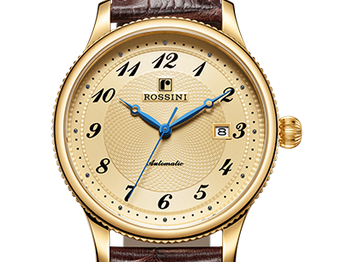Something about watch dial you need to know for custom watch/Private label watch
Watch Dial, is mainly used to display the time, and related to the overall appearance and material design of the watch. In order to meet the overall needs of the watch design, the surface can be designed in different shapes and materials. Common dial materials can be roughly divided into metal, pearl fritillary, enamel and carbon fiber.
1. Metal dial:
Metal can be divided into 925 silver dial and paint dial, paint dial with brass as the main material, is the most common one. Pearl fritilary dial is most often matched with the female watch, the use of this shell material to make the dial, can be viewed from different angles and feel the color changes. Enamel dial is generally used for high-level watches, because of the accumulation of humanity, history and emotion behind it, but also the inheritance of the ancient craft. Carbon fiber because of its flexible fiber, light weight, and has a variety of excellent properties of carbon elements, such as corrosion resistance, heat resistance, so often used in sports table, is a relatively new material.
Copper alloy, watch dial is the most common use of a kind of metal, in addition, watch dial will also choose ruthenium plating, gold and other metals as materials. The treatment methods of copper alloy include electroplating treatment, electroplating grinding treatment and ruthenium plating treatment. Electroplating treatment is mainly for copper alloy shell electroplating, to ensure its bright color, long as new; Electroplating polishing treatment is mainly to copper alloy electroplating, and then modified by different polishing methods, such as the sun grain polishing modification.

2. Pearl fritillary dial
The pearl fritillaria is the iridochromatic hard inner layer of the protective shell of certain shellfish, including abalone, pearl oysters, and mussels. Fritillaria is mainly composed of thin layers of calcium carbonate. The scintillation of iridescent colours results from the retention and reflection of light waves in them. Because of the unique nature of fritilary itself, each watch is difficult to be identical, its surface is unique, like a human finger model. The new process has made it a variety of colors, from white to midnight blue.
Now many dials in the male and female dial will use mother-pearl shell, its shimmer sparkle effect is very attractive, but fritillaria dial thin fragile, processing difficulty is higher, the production often involves 15 process steps, time can be up to 4-6 weeks, making fritillaria dial generally includes eight steps: Shell selection, trimming and shaping, hand finishing, CARVING, color enhancement, surface polishing, scale insertion and final finishing. Even a company like GT Cadran, which has 20 specialist craftsmen, produces only about 5,000 fritillaria watches a year.

3. Enamel dial
Enamel is a mixture of glass that can be stained with colorful colors by the addition of trace amounts of oxidized metal. The raw material of enamel glaze is flaky or rough powder; The artisans first pound the ingredients in a mortar into a fine powder, and then wash away the impurities. Rinse repeatedly and finally add water to make a thick liquid. The surface of the appliance is then carefully treated and underglazed, and the enamel is then filled over all or part of the appliance. After drying, the enamel coating must be calcined in a kiln at a high temperature of more than 800℃. Only then can the enamel fuse with the metal base and become very strong and stable. Firing is the decisive process of making enamel dial. It is fired in a kiln at a high temperature for 40 to 60 seconds. This method of calcination is called "large open fire enamel". As long as there are any defects in the process (cracks, miscellaneous points, surface bending, etc.), it can only be scrapped to start over. Depending on the complexity of the pattern, an enamel piece may need to be calcined as many as 12 times. Enamelart was very popular during the Byzantine period and reached its full strength by the end of the Middle Ages, especially in the areas where porcelain was produced. Today, enamelwork is still widely used, especially in the watch manufacturing industry.

4. Carton fiber dial
How to make carbon fiber dial? First of all, we are now seeing into any shape of carbon fiber products are carbon cloth, carbon cloth is by every longitudinal beam alternating fibers are two at the top and below with transverse textile fiber bundle interweave together, so you will see a very distinctive design, its single fiber five times finer than a human hair. In addition, carbon fiber's Young's modulus, which describes the ability of a solid material to resist deformation, is twice that of Kevlar fiber, which is made specifically for bulletproof vests, and it is resistant to corrosion. The second step is to soak in epoxy resin, the purpose of this is to give fiber chemical activity through gas phase or liquid phase oxidation, increase the affinity of resin, so as to prevent fiber damage, improve the effect of affinity with resin parent. In the third part, the epoxy impregnated fiberboard is molded in a mold, baked at high temperature and pressure, and then resin hardened. The fourth part begins the molding phase, in which a previously hardened carbon fiber embryo is CNC milled to a designer's design.
Fancytime, a professional custom watch manufacture, providing private label watch and custom watch services. As a custom watch manufacturer in China, we can create the watches based on your own designs or specifications.
